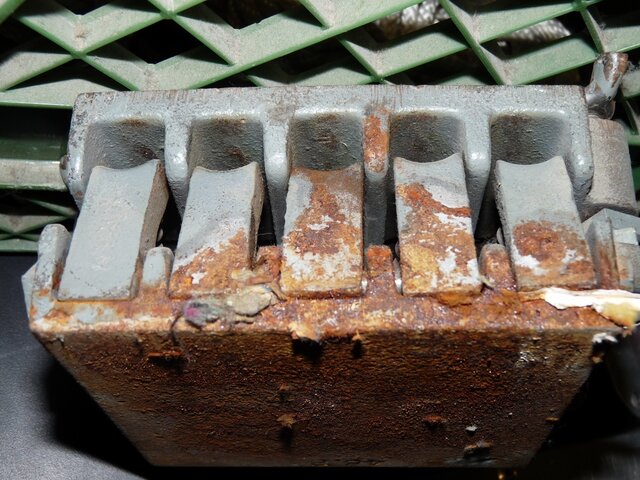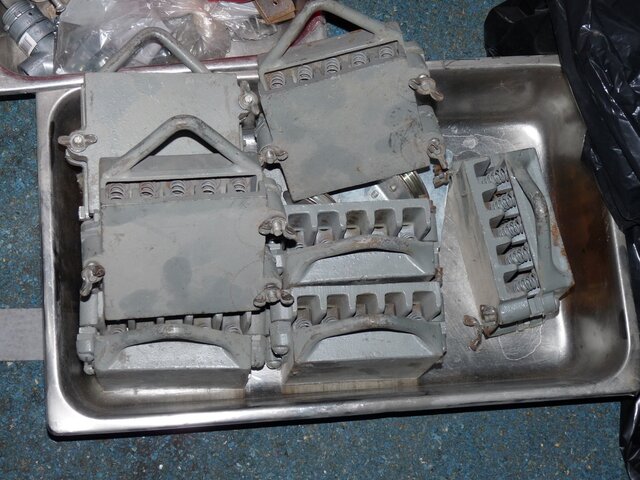Dear Riggers,
I was cleaning out my storage the other day and came across a great deal of rigging equipment. Everything from wire nuts that came from china to cable that looked like it was brand new when Civil was was going on. Needless to say a lot of this stuff has left my theatre since I have no idea what the ratings on it are and rust has no place in over head rigging.
I did come across a few clews though and I am not sure about. Most are in good shape but some are really rusted (see pic). I could not find a manufacturer and the only thing written on any of them was " 46 P". I was wondering if anyone knew anything about these things and if they should be trashed or saved. The rusty one is going away no matter what but any thoughts on the clean ones?


Thanks Gbtimex,
I was cleaning out my storage the other day and came across a great deal of rigging equipment. Everything from wire nuts that came from china to cable that looked like it was brand new when Civil was was going on. Needless to say a lot of this stuff has left my theatre since I have no idea what the ratings on it are and rust has no place in over head rigging.
I did come across a few clews though and I am not sure about. Most are in good shape but some are really rusted (see pic). I could not find a manufacturer and the only thing written on any of them was " 46 P". I was wondering if anyone knew anything about these things and if they should be trashed or saved. The rusty one is going away no matter what but any thoughts on the clean ones?


Thanks Gbtimex,


